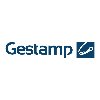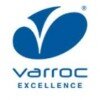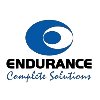Filter interviews by
ZF Steering Gear Trainee Production Engineer Interview Questions and Answers
ZF Steering Gear Trainee Production Engineer Interview Experiences
2 interviews found
I applied via Naukri.com and was interviewed in Apr 2022. There was 1 interview round.
(1 Question)
- Q1. Functional tes ring on steering gear box?
- Ans.
Functional testing on steering gear box is essential for ensuring its proper functioning.
Functional testing involves testing the steering gear box under normal operating conditions.
It helps to identify any defects or malfunctions in the steering gear box.
The testing process involves simulating different driving conditions and checking the response of the steering gear box.
Examples of tests include checking for proper a...
Interview Preparation Tips
- Steering gear box
- Vane pump
- Voil reservoir
I applied via Recruitment Consulltant and was interviewed in Nov 2023. There were 2 interview rounds.

(2 Questions)
- Q1. Self introduction
- Q2. And normal question for your study?
Top trending discussions






Interview questions from similar companies

Trainee Production Engineer Interview Questions & Answers
Knorr-Bremseposted on 17 Jul 2024
I applied via Approached by Company and was interviewed in Jun 2024. There were 2 interview rounds.
Written exam based on subjects and disciplined notes
(2 Questions)
- Q1. How much you know of your skill?
- Q2. What is your scope from working here?
Interview Preparation Tips

I applied via Walk-in and was interviewed in Jun 2021. There were 3 interview rounds.
Interview Questionnaire
1 Question
- Q1. Introduction
Interview Preparation Tips
Self introduction is best
Communication is good
Normal current affairs

Production Supervisor Interview Questions & Answers
Rane Brake Liningposted on 21 Dec 2024
I applied via Approached by Company and was interviewed in Nov 2024. There were 2 interview rounds.
(3 Questions)
- Q1. Basic method Specification method
- Ans.
The question is asking for the difference between basic method and specification method in production.
Basic method refers to a general approach or technique used in production without specific details.
Specification method involves detailed instructions or requirements for a specific task or product.
Example: Basic method for assembling a product may involve general steps, while specification method would include exact m
- Q2. Organization method
- Ans.
Organization method refers to the system or structure used to arrange and manage tasks, resources, and information in a production setting.
Utilize a clear and efficient system for task delegation and tracking
Implement visual management tools such as Kanban boards or Gantt charts
Establish regular communication channels for updates and feedback
Ensure proper documentation and record-keeping for processes and procedures
Enc...
- Q3. Safety working method
- Ans.
Safety working method involves implementing procedures and protocols to ensure the well-being of employees.
Implementing regular safety training for employees
Enforcing the use of personal protective equipment (PPE)
Conducting regular safety inspections and audits
Encouraging employees to report any safety concerns or hazards
Establishing emergency response plans and procedures
(2 Questions)
- Q1. Quality method Type of work method
- Ans.
Quality method refers to the approach or system used to ensure products meet standards. Type of work method refers to the specific process or technique used to complete tasks.
Quality method can include Six Sigma, Total Quality Management, Lean Manufacturing, etc.
Type of work method can include Agile, Waterfall, Kanban, etc.
Quality method focuses on ensuring products meet quality standards and customer requirements.
Type...
- Q2. Problem solving method
- Ans.
Problem solving method involves identifying the issue, analyzing possible solutions, implementing the best solution, and evaluating the outcome.
Identify the problem or issue at hand
Gather relevant information and data
Brainstorm possible solutions
Evaluate each solution based on feasibility and impact
Implement the best solution
Monitor and evaluate the outcome for effectiveness
Interview Preparation Tips
Thank you

An aptitude test is designed to assess an individual's ability to perform certain tasks or react to a range of different situations. These tests are often used by educational institutions and employers to evaluate potential candidates' skills, talents, and potential for success in a specific role or academic program. Here are some key details about aptitude tests:
1. **Purpose**: Aptitude tests are used to measure a variety of skills, including logical reasoning, verbal ability, numerical skills, and spatial awareness. They help to identify strengths and weaknesses and predict future performance.
2. **Types**:
- **Verbal Reasoning**: Assesses understanding and reasoning using concepts framed in words.
- **Numerical Reasoning**: Tests ability to work with numbers, including basic arithmetic, data interpretation, and logical problem-solving.
- **Abstract Reasoning**: Evaluates the ability to identify patterns, logical rules, and trends in new data.
- **Mechanical Reasoning**: Measures understanding of mechanical and physical principles.
- **Spatial Reasoning**: Assesses the ability to visualize and manipulate objects.
3. **Format**: Aptitude tests can be multiple-choice, true/false, or involve practical problem-solving tasks. They are often timed, with specific sections dedicated to each type of reasoning.
4. **Preparation**:
- **Practice Tests**: Taking practice tests helps familiarize with the format and types of questions.
- **Study Guides**: Reviewing basic concepts in mathematics, grammar, and logical reasoning.
- **Skills Development**: Enhancing skills through puzzles, reading, and other related activities.
5. **Usage**:
- **Recruitment**: Employers use aptitude tests to screen job applicants and find the best fit for a role.
- **Education**: Schools and colleges use these tests for admissions, placement, and identifying areas for student improvement.
- **Career Counseling**: Helps individuals understand their strengths and areas for improvement, guiding career choices.
6. **Scoring**: Scores are typically presented as percentiles, showing how a test-taker compares to a norm group. Higher scores indicate better performance relative to the norm group.
If you have specific questions about a certain type of aptitude test or need preparation tips, feel free to ask!
(2 Questions)
- Q1. Tell me about yourself.Tip: Provide a brief overview of your professional background, focusing on experiences relevant to the job you're applying for. Highlight your key achievements and skills.
- Q2. Know YourselfAssess and interest.
Interview Preparation Tips

I was interviewed in Aug 2023.
(2 Questions)
- Q1. Why are you change job ?
- Q2. What is your notice period?
(5 Questions)
- Q1. What is your KPI
- Ans.
My KPI as a Production Engineer is to ensure efficient production processes, minimize downtime, and optimize product quality.
Monitoring and improving production efficiency
Reducing downtime through preventive maintenance
Implementing quality control measures
Optimizing production output
Analyzing and improving production costs
- Q2. How to calculate OEE
- Ans.
OEE (Overall Equipment Efficiency) can be calculated by multiplying Availability, Performance, and Quality percentages.
Calculate Availability by dividing the total operating time by the planned production time.
Calculate Performance by dividing the actual production rate by the maximum production rate.
Calculate Quality by dividing the good units produced by the total units produced.
Multiply the Availability, Performance
- Q3. What is 4M and what is retroactive & prospective
- Ans.
4M is a methodology used in production engineering. Retroactive refers to actions taken after an event, while prospective refers to actions taken before an event.
4M is a methodology used in production engineering that stands for Man, Machine, Material, and Method.
Man refers to the human resources involved in the production process.
Machine refers to the equipment and tools used in production.
Material refers to the raw m...
- Q4. What is base documents of control plan
- Ans.
The base documents of a control plan include process flow diagrams, work instructions, and quality standards.
Process flow diagrams outline the sequence of steps in the production process.
Work instructions provide detailed instructions on how to perform each step of the process.
Quality standards define the criteria for acceptable quality and specify the required inspections and tests.
Other base documents may include con...
- Q5. What is 5W 1H
- Ans.
5W 1H is a technique used to gather information by asking five 'W' questions and one 'H' question.
5W 1H stands for Who, What, When, Where, Why, and How.
It is commonly used in journalism, problem-solving, and project management.
By asking these questions, one can gather comprehensive information about a situation or problem.
For example, in a production engineering context, the 5W 1H questions could be: Who is responsible...

I applied via Recruitment Consulltant and was interviewed in Jun 2023. There were 4 interview rounds.

(1 Question)
- Q1. Questions was technical as injection Moulding
(1 Question)
- Q1. Jobs related Questions
(1 Question)
- Q1. Only salary discotions

Production Engineer Interview Questions & Answers
Toyoda Gosei Mindaposted on 3 Apr 2024
(1 Question)
- Q1. 7QC tools, 5'S, OEE formula, 4M change management, analysis,

I applied via Walk-in and was interviewed before May 2023. There were 2 interview rounds.
(1 Question)
- Q1. CAD Test - Need to create Parametric CAD model and its drawing within 45 minutes.
(1 Question)
- Q1. 1. Basic Settings System related questions like Function of seat. 2. Regulations which need to consider while designing the product. 3. Timeline and phases of project. 4. Test details which are going to pe...
Interview Preparation Tips
- Seating System
ZF Steering Gear Interview FAQs
Tell us how to improve this page.
ZF Steering Gear Interviews By Designations
- ZF Steering Gear Maintenance Engineer Interview Questions
- ZF Steering Gear Trainee Production Engineer Interview Questions
- ZF Steering Gear Assistant Manager Interview Questions
- ZF Steering Gear Design Engineer Interview Questions
- ZF Steering Gear Embedded Engineer Interview Questions
- ZF Steering Gear Fire & Safety Supervisor Interview Questions
- ZF Steering Gear Full Stack Web Developer Interview Questions
- ZF Steering Gear Graduate Engineer Trainee (Get) Interview Questions
- Show more
Interview Questions for Popular Designations
- Production Engineer Interview Questions
- Production Supervisor Interview Questions
- Production Manager Interview Questions
- Production Officer Interview Questions
- Executive Production Interview Questions
- Production Interview Questions
- Senior Production Engineer Interview Questions
- Production Chemist Interview Questions
- Show more
People are getting interviews through
Interview Questions from Similar Companies
Fast track your campus placements
ZF Steering Gear Trainee Production Engineer Reviews and Ratings
based on 3 reviews
Rating in categories
|
Senior Engineer
587
salaries
| ₹5 L/yr - ₹22 L/yr |
|
Specialist
286
salaries
| ₹8.4 L/yr - ₹24.6 L/yr |
|
Technical Lead
244
salaries
| ₹10 L/yr - ₹31.5 L/yr |
|
Senior Software Engineer
226
salaries
| ₹7 L/yr - ₹18 L/yr |
|
Production Engineer
162
salaries
| ₹1.4 L/yr - ₹4.5 L/yr |

Bharat Forge

Samvardhana Motherson Group

Sundaram Clayton

Rane (Madras)
Calculate your in-hand salary
- Home >
- Interviews >
- ZF Steering Gear Interview Questions >
- ZF Steering Gear Trainee Production Engineer Interview Questions










